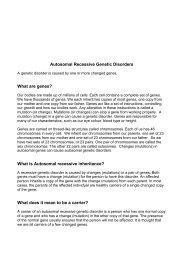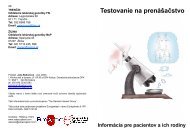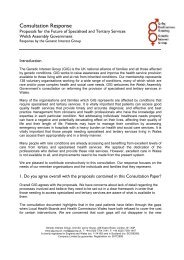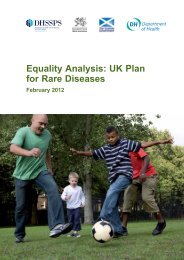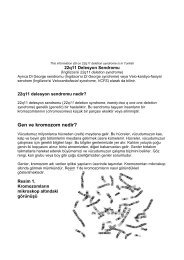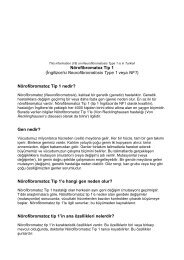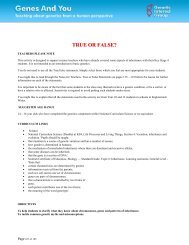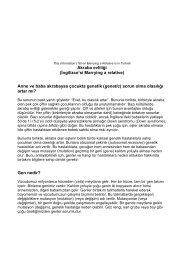FAQ on Biobanks - Genetic Alliance UK
FAQ on Biobanks - Genetic Alliance UK
FAQ on Biobanks - Genetic Alliance UK
Create successful ePaper yourself
Turn your PDF publications into a flip-book with our unique Google optimized e-Paper software.
2. Which categories of biobanks exist and what<br />
are their goals?:<br />
A biobank is the general term for a repository of biological tissue. But there is currently no<br />
universal classificati<strong>on</strong> system for biobanks. However, several categories are comm<strong>on</strong>ly<br />
distinguished, including tissue type, purpose, ownership, volunteer group, and size (see<br />
Table I). For example:<br />
There are biobanks created from newborn screening blood spots by state newborn screening<br />
laboratories. These biobanks may be used for populati<strong>on</strong>-based determinati<strong>on</strong>s.<br />
Tumor banks are another class of biobanks, in which tumors from cancer patients are studied<br />
for biomarkers associated with disease.<br />
<strong>Biobanks</strong> of umbilical cord blood c<strong>on</strong>tains d<strong>on</strong>ated cells from a recent pregnancy for use in<br />
transplantati<strong>on</strong> and stem cell research.<br />
Populati<strong>on</strong>-based biobanks are defined as large repositories of d<strong>on</strong>ated human DNA and/or<br />
its informati<strong>on</strong>, collected from volunteers with and without disease, used to identify genes<br />
that c<strong>on</strong>tribute to human disease, and to investigate possible therapies<br />
Table I<br />
Human Biobank Classificati<strong>on</strong>s<br />
Tissue Type<br />
Purpose / intended use<br />
Ownership<br />
Tumor tissue, cells, blood, DNA, or DNA array results<br />
Research, forensics, transplantati<strong>on</strong>, source for therapeutics (e.g.<br />
umbilical blood, stem cell biobanks for individual or community<br />
use), or diagnostics<br />
Academic & research instituti<strong>on</strong>s, hospitals, biotechnology &<br />
pharmaceutical companies, and stand-al<strong>on</strong>e biobank companies<br />
and foundati<strong>on</strong>s may hold biobanks. Ownership may be private,<br />
public or in partnership across sector boundaries<br />
Public, managed in partnership with government<br />
Volunteer group /<br />
group of participants<br />
Populati<strong>on</strong>-based, such as all newborns, adults,<br />
or pregnant women<br />
Disease-based, including <strong>on</strong>ly those with a specific disease<br />
Size<br />
Disease group, regi<strong>on</strong>al, statewide, or nati<strong>on</strong>al<br />
<str<strong>on</strong>g>FAQ</str<strong>on</strong>g> <strong>on</strong> <strong>Biobanks</strong>



